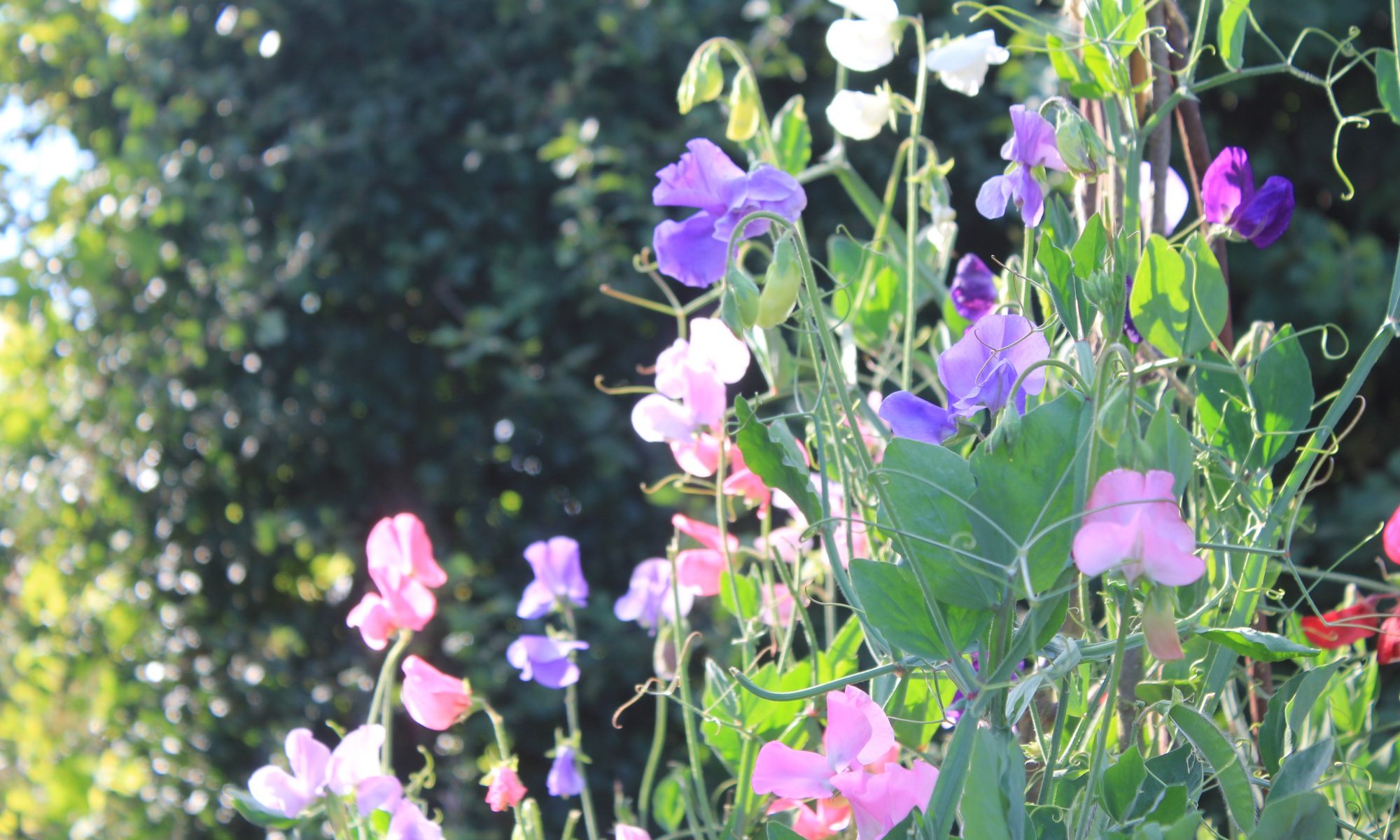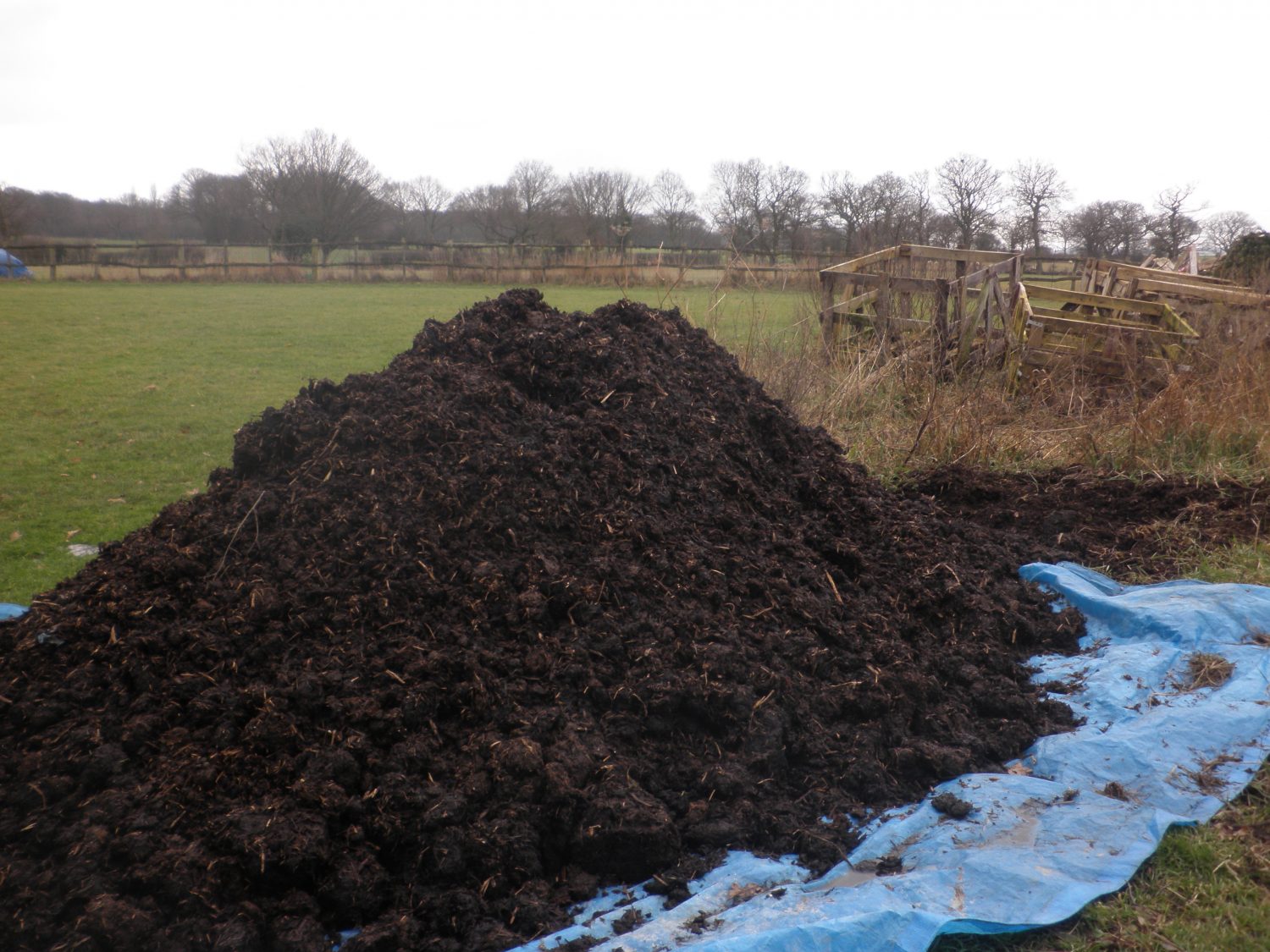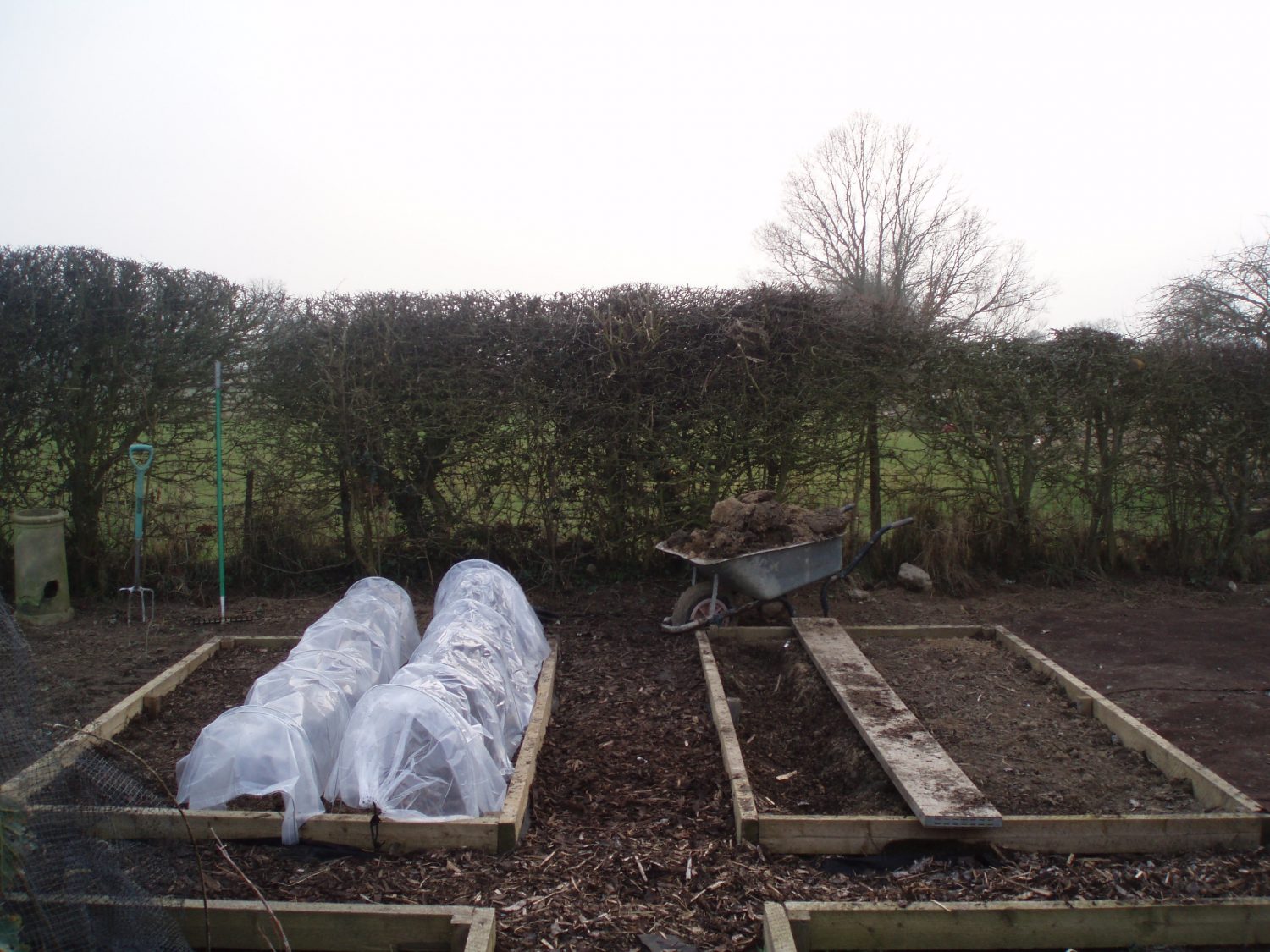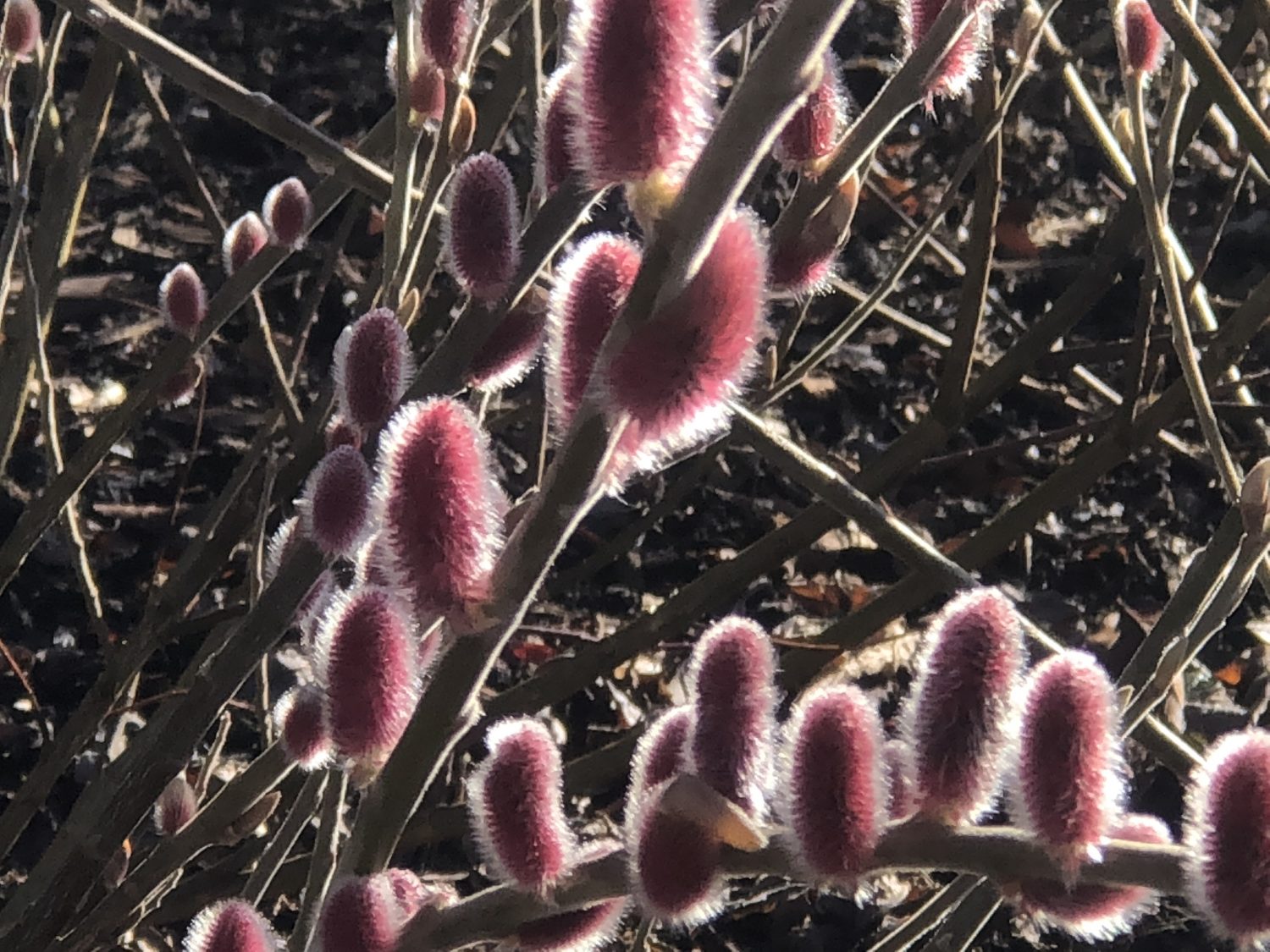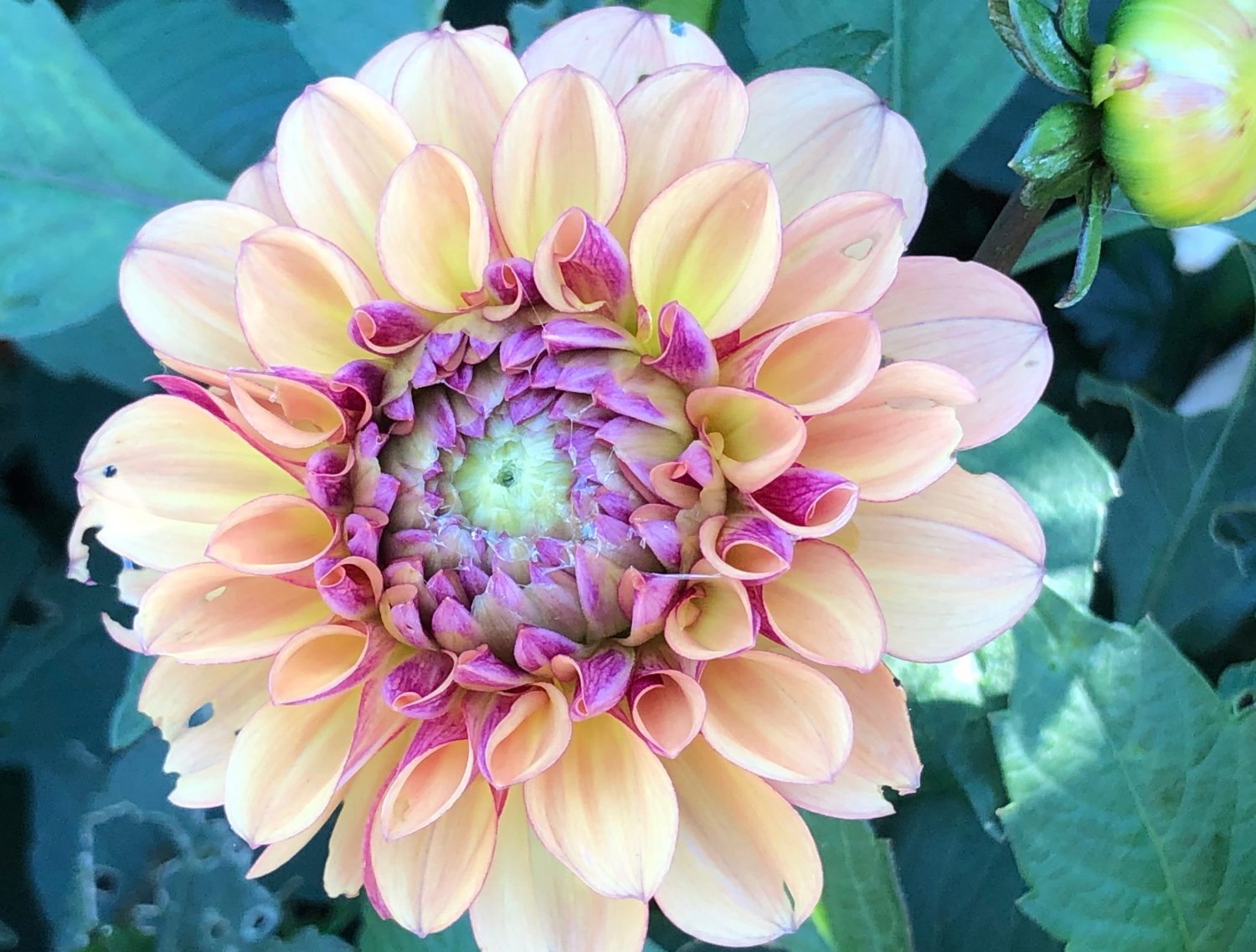Jo Arnell gives her soil-enriching recommendations to ensure your garden plants never go hungry
Above: Sweet peas are greedy plants
Restore, Replenish, Renew
This is not the beauty page, or an advert for skin cream, but I do want to talk about nourishing an important epidermis – the soil. The living breathing layer of loam – or clay, or sand, beneath our feet. And just as our skin relies on a combination of surface treatments, good diet and inner balance in order to stay truly healthy, so does our soil – a quick spritz with a chemical is not enough. We also need protection from the ravages of the elements and moisture loss too. Keep your soil in great shape and your plants will be healthy, more productive and less susceptible to attack from pests and diseases.
Microbiome
Soil biology is a complex subject and one that we are only just beginning to understand – in fact we know more about the cosmos or the deep oceans than we know about the soil. We can see the monsters that patrol the soil – the moles, earthworms, beetles, slugs, centipedes etc, but all around them, and vital to their wellbeing, are the microscopic organisms, invisible to the naked eye – the fungi, nematodes, protozoa, bacteria and viruses. It is a bustling place, alive and richly diverse. Astoundingly – in fact, almost unbelievably, there are more microbes in one teaspoon of healthy soil than there are people in the world – if Horton hears a Hoo, the Hoos can hear their own micro Hoos too.
There is much talk these days about our gut microbiomes and the millions of micro-organisms that teem about within us, living in symbiosis with our own cells and helping (or otherwise) to regulate our bodily functions. A similar thing is happening with plants in the area around their roots called the Rhizosphere, where a complex web of many thousands of bacterial and micorrhizal interactions take place to help feed, hydrate and protect (and occasionally compromise) the health of the plant. The exact combinations and connections will depend on the plant and the type of soil it grows in.
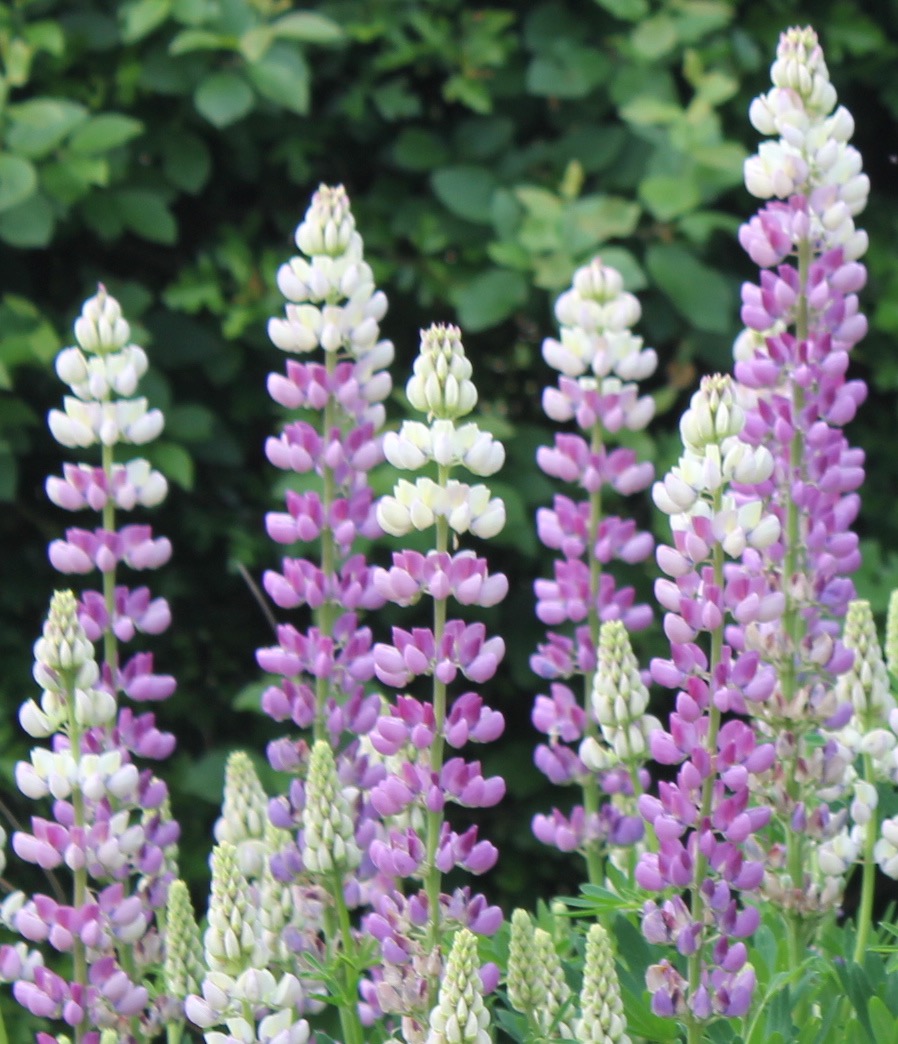
Know your soil type
Understanding your soil will give you an indication of which plants will thrive in your garden. If you are growing edibles it will also help you to decide whether you can grow directly into your soil and what changes might be needed, or whether you might be better to construct some raised beds and choose the soil that goes in them. There are three main types of soil; loam, clay and sand, but yours could also be chalky, silty (silky, almost soapy to the touch), or peaty (spongy/fibrous). You don’t need a soil testing kit necessarily, although this will give you a good idea of the soil’s pH (how acidic it is). Simply go outside and take a small trowel full of soil from just under the soil’s surface. Take a handful and squeeze it, then open out your hand again. If the soil stays in a ball, or feels sticky to the touch, it is clay.
If, on the other hand, the handful feels gritty (you can easily see the particles) and it won’t stay in a ball, even when wet, then it is sandy. The holy grail of soil is loam, which, when squeezed will almost form a ball and then crumble nicely into a heap again.
Left: Lupins will help to feed the soil with nitrogen
Improve the soil’s structure
Clay is fertile and tends to be naturally slightly alkaline, which many vegetables (especially brassicas like cabbage and Brussel sprouts) appreciate. The main problem is that it is hard to work and slow to warm in spring – if you sow seed directly into cold wet clay at the beginning of the season, it probably won’t germinate. To improve clay soil, just keep adding bulky organic matter and grit. Clay (and silty) soils can be prone to forming pans of compacted soil, either on or under the surface, leading to problems with drainage and poor penetration of plant roots. You can help warm the soil by placing a layer of black plastic over it in late winter, use cloches, or sow into guttering or pots, before planting out when the soil has warmed.
Sandy soil is nice and easy to work and fast to warm in the spring, so the season can start earlier. Crops that thrive in sandy soils are roots such as carrots, parsnips and bulbs – onions, garlic and leeks. But sandy soil is very free draining, so water (and the precious nutrients dissolved in it) leaches away out of the soil, leaving it parched and dry. Adding bulky organic matter will help sandy soil retain moisture and improve its fertility.
Stones are often the cause of forking carrots (together with erratic watering and feeding). It is impossible to remove all the stones from your plot, but do try to sieve out some of the bigger ones if you can, while you’re working in the soil – over time they will disappear, leaving you with a better soil for planting in. If the site is too stony, it may not be suitable. You may do better with raised beds. Chalky soils present similar problems and often only have a thin layer of topsoil.
The addition of bulky organic matter (homemade compost, animal manure, or spent mushroom compost) will improve the soil structure. Soil needs to have tiny pockets of air in it – to encourage earthworms and beneficial micro-organisms and help the plants’ roots penetrate. Plant roots also need oxygen. The addition of organic matter also helps the soil to retain nutrients and moisture – and prevents weeds. Mushroom compost is alkaline, which is good for vegetable gardens. Manure and compost are excellent, adding bulk and nutrients. Make sure any horse or farmyard manure is well rotted, or it will scorch roots and may contain pathogens.
Clockwise from above left: Organic matter is the best soil conditioner; Willow will grow in damp soil; Use cloches to warm the soil up in spring; Dahlias like rich soil.
No digging
The theory is that digging does more harm than good, disturbing the balance of micro-organisms and destroying the structure of the soil and releasing carbon into the atmosphere. Stop digging and the soil becomes more stable, there’s less likelihood of erosion, and you won’t need to water it a lot as it will retain more moisture. The plants will be healthier, because the soil is healthier and there will be fewer pests. There is no need to dig if you have good soil and can wait for the worms to incorporate organic matter down into the soil – spread a thick layer of manure over in autumn/winter and let nature do the rest.
Feed me
The three main plant nutrients are: nitrogen (chemical symbol: N) for good leaf growth, phosphorous (P) for promoting strong root growth and potassium (K) for flowers and to aid the ripening of fruit. These key elements are available to the plants – dissolved in the soil and are taken up by the plants’ roots. Plants can’t use atmospheric nitrogen, but some (legumes like peas, beans and lupins) have developed small nodules on their roots to house symbiotic bacteria that are able to fix nitrogen from the air and make it available to the plant.
Use chemical fertilisers containing nitrogen sparingly, as overdoses of nitrates are very bad for the environment and can also cause plants to grow too fast, resulting in thin sappy leaves that are prone to pests and diseases.
Other important nutrients such as magnesium, calcium and iron are usually present in the soil in sufficient quantities to maintain plant health. The exceptions are acid-loving plants that can only access iron from soils with a low pH – in alkaline soils they become chlorotic. Grow plants like Camellias and Rhododendrons in ericaceous compost.
Whether your soil is sandy, chalky or unyielding clay, it will benefit from a nice thick layer of organic mulch – apply right now at the beginning of the growing season. This will feed the soil and the soil will feed the plants.
For details of Jo’s gardening courses visit hornbrookmanor.co.uk or contact Jo on 01233 861149.
You may also like
Go with the Flow
Sue Whigham shares some valuable new-to-gardening advice I’m sure that by now we should be used to the rain but I’m not entirely sure that we are. We had a dry, sunny day the other day and how everybody’s mood...
Farm Fables
Jane Howard gets to the bottom of why so many ponds have disappeared across the High Weald I have a new passion, almost an obsession, it’s about ponds. And there’s a distinct possibility I might become a bit of a...
Hedge Issues
Sue Whigham takes a meander along nature’s verdant and vital corridors Recently the BBC’s Today programme carried a feature about England’s hedgerows which created a lot of interest among listeners. On the strength of that, Martha Kearney interviewed one of...
